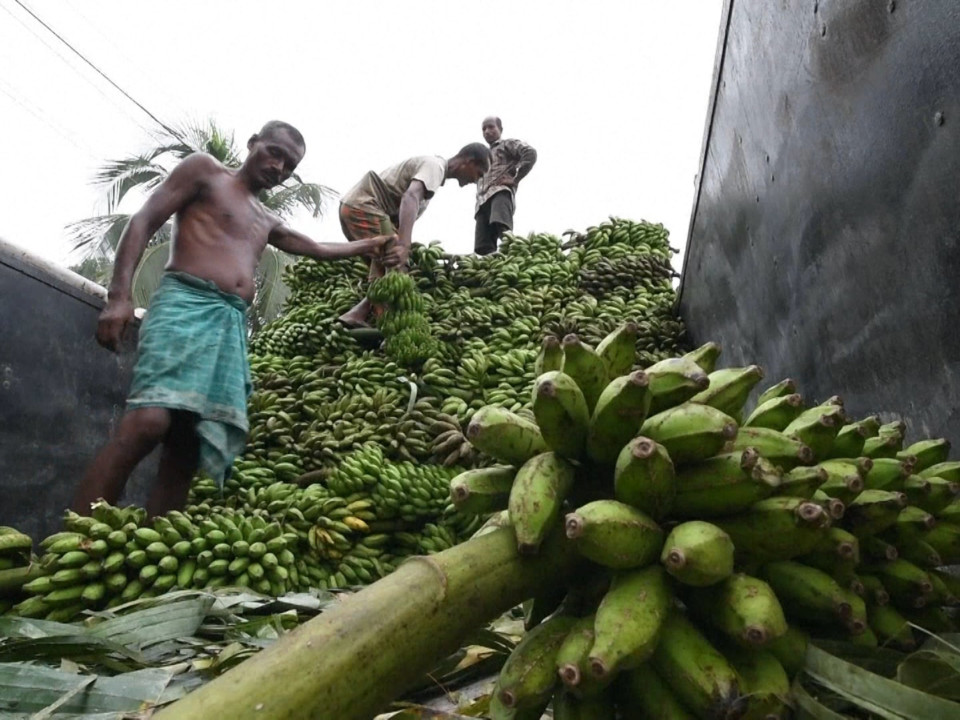There’s a deadly sickness befalling bananas. It’s called Panama disease, or banana wilt. CGTN’s Isbella Diaz explains what it is, and what people are doing to combat it.
Banana wilt happens when the fungus Tropical race 4 (TR4) infects the soil and attacks the root of the plant. Stems eventually turn black, and leaves turn yellow, wilt, and die.
Crops throughout Africa, Asia, and Australia have already been hit hard.
The most popular banana is currently the Cavendish. More than 100 billion bananas are consumed every year, and the Cavendish makes up 99 percent of all banana exports.
One reason the disease is so devastating is because of the widespread export of just one variety of banana.
Banana farmers in the Philippines are already planting two different varieties of the Cavendish banana that are more resistant to the disease.
CGTN’s Barnaby Lo took a trip to the banana fields of Southern Philippines’s Davao del Norte, to peel away at the problem.
Follow Barnaby Lo on Twitter @barnabychuck
But this isn’t the first time bananas have been faced with this dilemma.
The Gros Michel banana was widely consumed in the 1900s and was a lot sweeter than the Cavendish. But in the the 1920s, Tropical race 4 also hit the Gros Michel. By the 1940s, most breeders switched to the Cavendish.
Botanists are now working on creating a new Cavendish “super banana” that is better at resisting wilt. They hope to genetically modify it with an improved immune system.
But with more than 1,000 different bananas varieties in the world, some growers are also hoping to give non-Cavendish bananas more attention.
 CGTN America
CGTN America


